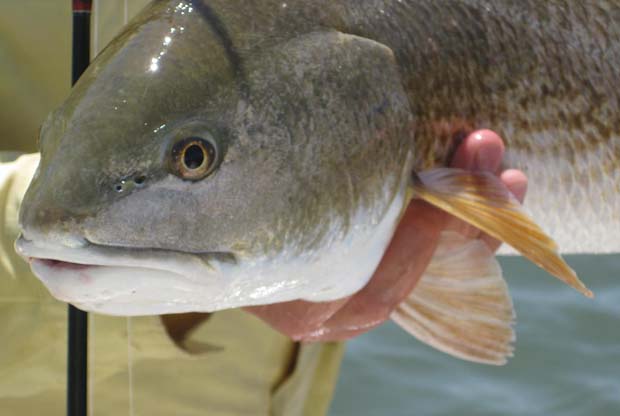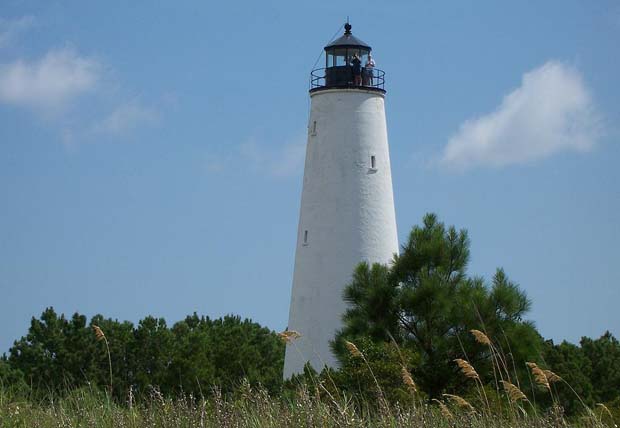The Conservation Captain for February 2015 is Georgetown, South Carolina guide Capt. Steve Roff
[dropcap]S[/dropcap]teve first introduced Bonefish & Tarpon Trust (BTT) to a potential juvenile tarpon habitat research site at a Wildlife Management Area near Georgetown, South Carolina. He is also heavily involved with the Lowcountry Tarpon Tournament, which has made numerous donations to BTT. Most recently he’s been organizing juvenile tarpon sampling efforts (scales and fin clips) near South Island.
For more information on Capt. Steve Roff, check out his website. . .
Where do you guide and how long have you been guiding for?
SR: It’s hard to believe I am into my 16th year of guiding anglers! I live and operate out of Georgetown, SC.
How did you become a fishing guide?
SR: Great question. My background is Marine Science and I worked as a Marine Biologist right out of college. I was fortunate and mentored by the first guide in our area, Gene Dickson. He was valuable in developing my skills with clients and on the business end of things. Guiding may also be in my blood, as my grandfather and father loved putting anglers on the fish.
How many days per year do you guide?
I spend roughly 220 days guiding fishing clients, 20 days waterfowl guiding and 20 days taking families out to explore and learn about our unique and preserved marine barrier islands and estuaries. We are blessed with over 60 miles of preserved coastal habitat in my area of South Carolina.
What species do most of your clients want to fish for. Why?
Tarpon – My customers and I share a love for those big beautiful, powerful acrobatic fish. Why? Because nothing feels better than taking out a newbie, introducing them to the sport, seeing their reaction to the bite. If I can combo this experience with a female or a teen catching and releasing a tarpon, it’s all the more gratifying.
Tell us about the Tarpon fishery in South Carolina.
Our fishery knowledge base in South Carolina has made great leaps in the past five years. The fishery used to be sporadic and not many anglers targeted tarpon. Most of the early catches were secondary while fishing for sharks and king mackerel. Now we’ve developed techniques to catch tarpon from the flats, rivers and beachfront habitats using artificials and live bait. The conservation ethic for our tarpon fishery really began with Andrew McClain and the first Low Country Tarpon Tournament. During that tournament we put the first satellite tag in a tarpon in SC. From that point I developed a relationship with Aaron Adams of the Bonefish and Tarpon Trust and Dr. Jerry Ault of the Univ. of Miami. That relationship has grown into a partnership of increased tarpon migration knowledge, common sense regulations and to now working with our juvenile tarpon. The staff especially, JoEllen Wilson, Juvenile Tarpon Habitat Program Manager, has made several visits to coordinate our efforts in identifying juvenile tarpon habitat and conduct DNA sampling.
In your opinion, why is the juvenile tarpon population of SC so special and why are they worth studying?
Many were surprised to learn that the estuarine marshes of South Carolina are a productive juvenile tarpon nursery habitat. For me it’s a little scary that we know so little about this stage of a tarpons life. Many questions arise – Do we have local spawning? If so, how abundant is it? What is the survival rate? What is the juvenile temperature tolerance? And the list goes on. I can tell you from previous sampling that these small 6”-10” tarpon are here, and answering a few question about these fish may provide a piece to the overall understanding and management of Atlantic tarpon.
Are there any negative issues facing your fishery?
Thanks to Senator Chip Campson, Government Affairs Advocate Fred Allen, Representative Stephen Goldfinch, and concerned anglers like Dave Devoe and I, we now have regulations that protect tarpon in South Carolina. These common sense laws make tarpon fishing what it should be, a catch and release fishery. However, we still encounter jaw gaffing, improper release and handling of mature fish. Our SC Dept. of Natural Resources created educational materials designed to help anglers properly handle and release tarpon. My biggest concern now as our angler participation grows is boats chasing feeding fish and putting increased pressure on the big females.
Why do you support Bonefish and Tarpon Trust?
Bonefish and Tarpon Trust was there in the beginning of our fishery to help guide and educate me on issues and possible solutions. Not only in FL, but from the tarpons historic geographical range. BTT’s holistic approach of identifying tarpon habitat use, life cycle biology, reducing angler impacts and supporting proper regulations just makes sense.
In your opinion, what is the most important work that BTT does and why?
I’ve observed BTT bringing the fishing community and science together with the common goals of sustaining and increasing tarpon populations. From the director on down, all BTT staff and volunteers freely share hard lessons learned in regional tarpon fishery. As a non-profit they provide a service that no one else is doing and use their resources wisely. The bottom line is, BTT staff fish and as anglers with a scientific approach, this organization is the primary storage and dissemination organization relating to tarpon management, education and conservation. Just check out their website.
Why should a fisherman that doesn’t live near the coastal southern United States or the Caribbean care about BTT?
They too may want catch a bonefish, tarpon or permit and support the organization that protects their passion. The habitat protection that BTT works towards benefits all of us and our many outdoor activities.
You have the day off. What species are you going to fish for, where are you going to find them, and what are you going to use to catch them?
Love to put my wife and kids in the boat and explore a new area. Nothing better than seeing feeding tarpon or rolling fish where you didn’t expect it.
Tell us one of your favorite fishing stories.
I was fortunate to guide some clients to a second Low County Tarpon Tournament win. We fished in rough weather and angling conditions, and at the last hour of the last day we found a pile of 80-pound tarpon (backs and tails out of the water feeding) that took artificials and sealed the victory. Didn’t expect to find those fish and leader three fish in 45 minutes. Two of the three anglers caught their first tarpon that day and left the tournament pumped and ready to follow the tarpon!
[information]
Join the Bonefish & Tarpon Trust to learn more about fishing, conservation, biology, habitat and the iconic bonefish, tarpon and permit.
[/information]




